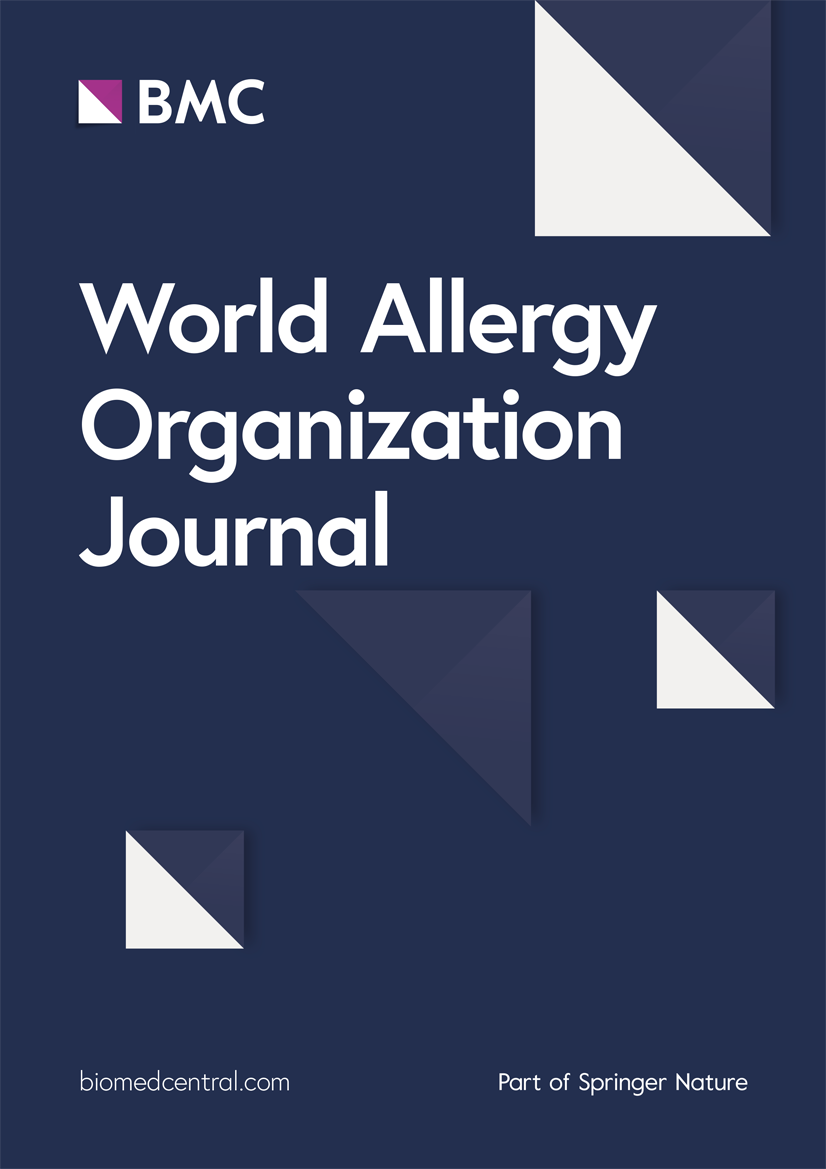嗜酸性粒细胞食管炎与吸入性抗原:指出过敏性鼻炎、免疫疗法和生物疗法的作用
IF 3.9
2区 医学
Q2 ALLERGY
引用次数: 0
摘要
嗜酸性粒细胞食管炎(EoE)和过敏性鼻炎(AR)通常是特应性进展的最新表现,具有共同的 2 型炎症反应。嗜酸性粒细胞性食管炎队列中 AR 的相关患病率已得到广泛证实。越来越多的文献评估了航空抗原在特应性鼻炎发病机制中的作用,主要关注新诊断、症状和治疗反应的季节性。遗憾的是,迄今为止的研究还没有确定方向,这可能是由于这些研究采用了回顾性设计,选择了肠易激综合征活动的代用指标(主要是新诊断的日期),而这些指标可能会受到地理、物流和个人因素的影响,很可能与疾病本身无关。根据花粉水平(最好是花粉计数)报告的肠易激综合征加重可能是更可靠的标志物。AR 可能会通过局部机制(即通过鼻后滴流大量接触空气中的抗原)和全身机制(2 型炎症)促进咽喉炎的发病和再次恶化。此外,AR 可能会导致花粉食物过敏综合征(PFAS),从而促进 EoE 的发生,而患有 PFAS 的 EoE 患者报告的 AR 发生率较高,这表明这三种疾病之间存在联系,其因果关系仍有待确定。此外,由于过敏原的活性从 Th2 炎症转变为 Th1 炎症,一些病例报告重点探讨了过敏原免疫疗法(AIT)治疗咽喉炎患者 AR 的效果。同样,虽然舌下免疫疗法(SLIT)经常被报道会加重咽喉炎,而 SCIT 则大多被描述为缓解病情的辅助疗法,但在这种情况下,并不能保证一定会产生效果。我们过敏服务部门的实际经验似乎证实了这一假设。最后,单克隆抗体作为一种潜在的治疗同时伴有肠易激综合征和 AR 的未来选择,应保持警惕。有鉴于此,应该对呃逆患者的过敏史进行仔细评估。未来应着眼于前瞻性研究,以阐明空气传播的抗原、AR 和咽喉炎之间的致病关系,并找到可行的综合治疗方法。本文章由计算机程序翻译,如有差异,请以英文原文为准。
Eosinophilic esophagitis and inhalant antigens: Pointing out the roles of allergic rhinitis, immunotherapy and biologic treatment
Eosinophilic esophagitis (EoE) and allergic rhinitis (AR) usually represent the latest manifestations of the atopic march, sharing a common type 2 inflammation response. A relevant prevalence of AR in EoE cohorts has been widely confirmed. An increasing literature assessed the involvement of aeroantigens in EoE pathogenesis, focusing foremost on the seasonality of new diagnoses, symptoms, and response to therapy. Unfortunately, no diriment direction has been achieved, probably due to the retrospective design of the studies so far available, which chose surrogate markers of EoE activity (mostly the date of new diagnosis) which may be affected by geographical, logistic and personal factors, probably not dependent by the disease itself. EoE exacerbations reported in the context of the pollen levels (preferably pollen counts) may represent a more reliable marker. AR might promote the onset and the re-exacerbation of EoE through mechanisms that are both local (ie, massive exposure to airborne antigens mediated by post-nasal drip) and systemic (type 2 inflammation). Furthermore, AR may facilitate EoE onset by predisposing to pollen food allergic syndrome (PFAS), and EoE patients with PFAS reported higher rate of AR, thus suggesting a bond among these 3 conditions whose causative relationship have still to be ascertained. In addition, because of its shifting activity from Th2 to Th1 inflammation, several case reports focused on the effect of allergen immunotherapy (AIT) employed to treat AR in EoE patients. Also in this instance, no certainties could be guaranteed, although sublingual immunotherapy (SLIT) is more frequently reported to exacerbate EoE, while SCIT is mostly described as a remission adjuvant. The real life experience reported from our allergy service appears to confirm such hypothesis. Finally, a watchful eye should be reserved to monoclonal antibodies as a potential future option for concomitant EoE and AR. In light of all this, an attentive evaluation of allergic history of EoE patients should be relevant. Future perspectives should be addressed on prospective studies targeted to shed light on causative relations among airborne antigens, AR and EoE, and to viable comprehensive treatments.
求助全文
通过发布文献求助,成功后即可免费获取论文全文。
去求助
来源期刊

World Allergy Organization Journal
Immunology and Microbiology-Immunology
CiteScore
9.10
自引率
5.90%
发文量
91
审稿时长
9 weeks
期刊介绍:
The official pubication of the World Allergy Organization, the World Allergy Organization Journal (WAOjournal) publishes original mechanistic, translational, and clinical research on the topics of allergy, asthma, anaphylaxis, and clincial immunology, as well as reviews, guidelines, and position papers that contribute to the improvement of patient care. WAOjournal publishes research on the growth of allergy prevalence within the scope of single countries, country comparisons, and practical global issues and regulations, or threats to the allergy specialty. The Journal invites the submissions of all authors interested in publishing on current global problems in allergy, asthma, anaphylaxis, and immunology. Of particular interest are the immunological consequences of climate change and the subsequent systematic transformations in food habits and their consequences for the allergy/immunology discipline.
 求助内容:
求助内容: 应助结果提醒方式:
应助结果提醒方式:


